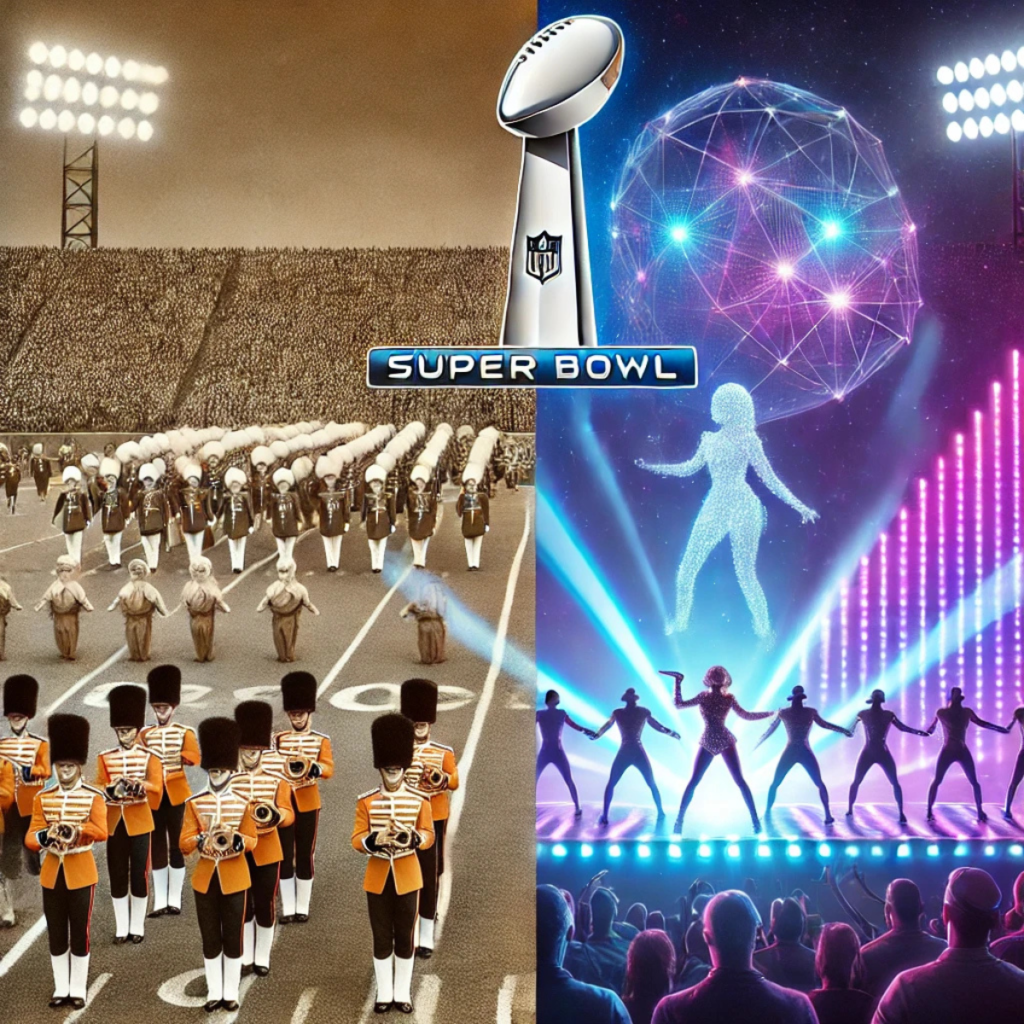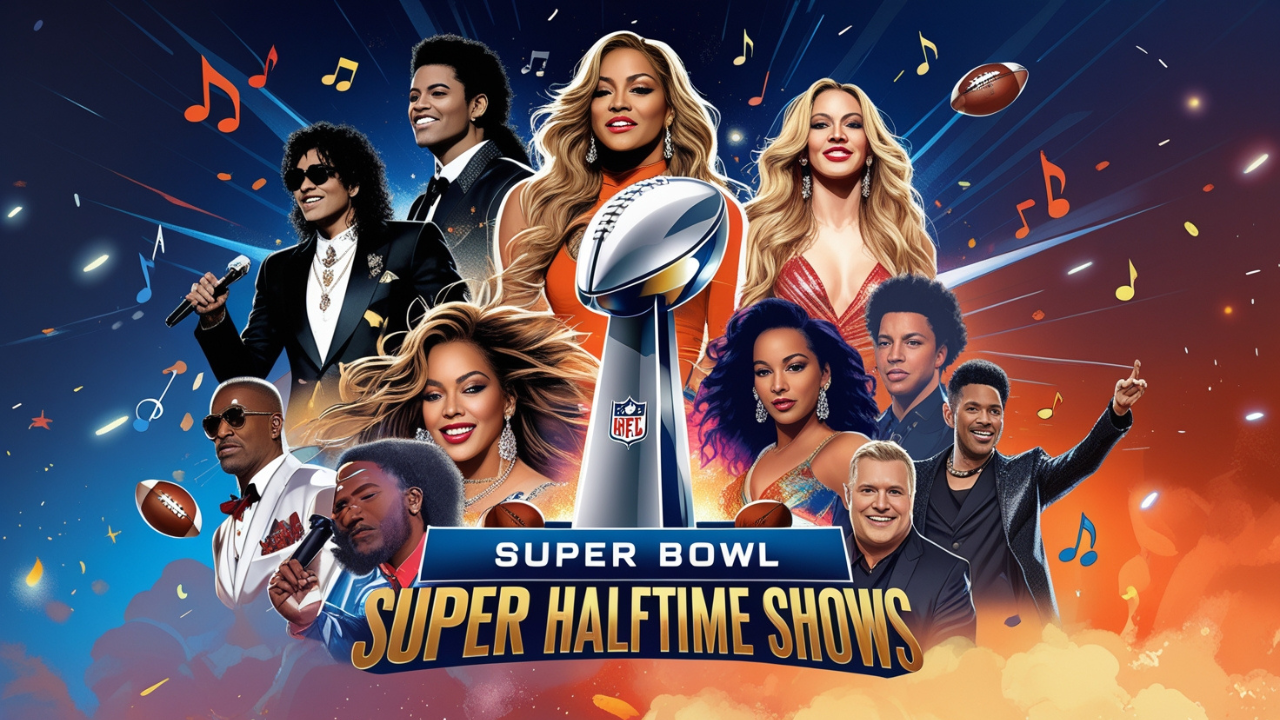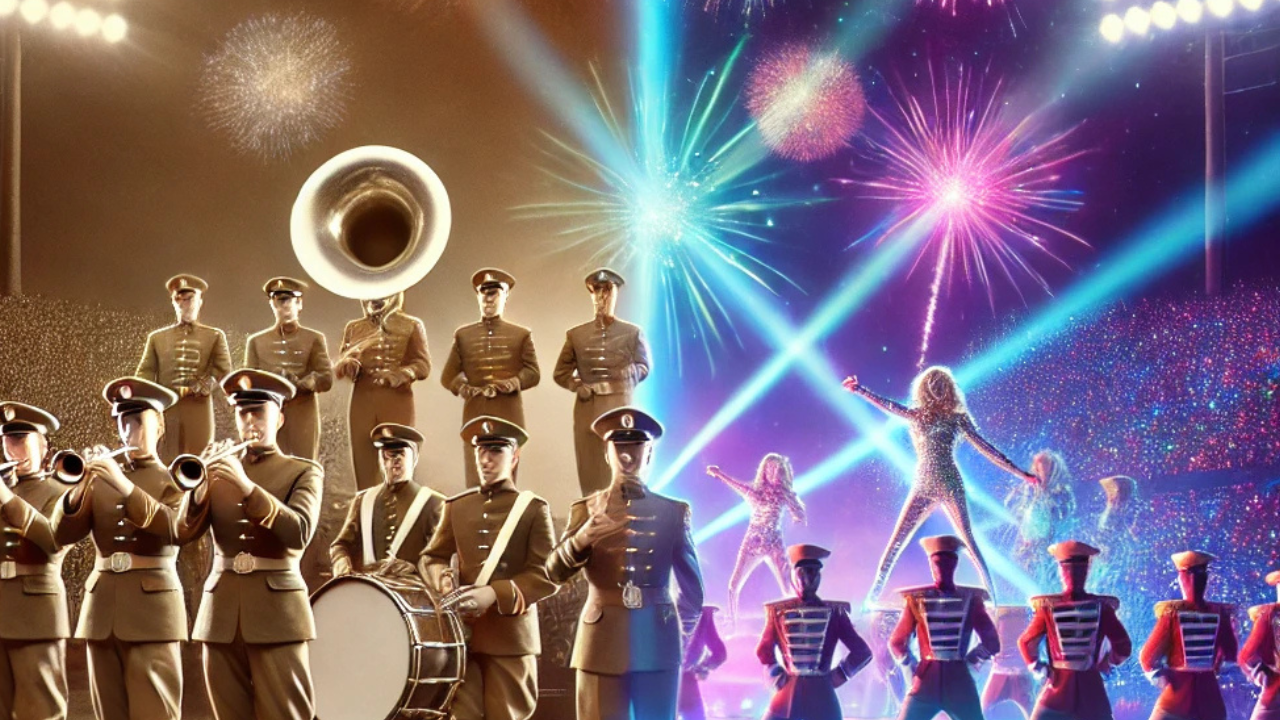When we think of the Super Bowl, touchdowns and tackles might grab the headlines, but let’s be honest—many of us are equally (if not more) excited about the halftime show. Over the decades, what started as a simple break filled with marching bands has transformed into one of the most anticipated entertainment spectacles of the year. Super Bowl halftime shows now draw massive global audiences, rivaling the game itself in popularity.
From behind-the-scenes logistics to unforgettable performances, let’s explore how halftime shows became the cultural powerhouse they are today.
The Early Days (1960s-1980s): Marching Bands and Modest Beginnings
In 1967, when the first Super Bowl aired, halftime entertainment wasn’t exactly a cultural phenomenon. College marching bands and local acts like the University of Arizona Symphonic Marching Band took center stage. The performances were charming but simple, serving as filler while players rested.
Fun Fact: Did you know that tickets to the first Super Bowl cost just $12, and even then, the stadium didn’t sell out?
Throughout the 1970s, the NFL continued to feature marching bands and military ensembles. While the music kept the crowd entertained, the focus was always on the game, not the show. The halftime performance was more about tradition than innovation.
The Shift to Pop Culture: 1980s

By the late 1980s, things started to change. The NFL realized it could use halftime as a platform to attract broader audiences. In 1987, Disney characters joined the halftime lineup, signaling a shift toward family-oriented entertainment.
The real breakthrough came in 1991 when New Kids on the Block performed during halftime. This was the first time a contemporary pop group headlined the show, marking a shift from traditional performances to pop culture. Fans loved it, and the NFL saw its potential to make halftime a bigger draw than ever before.
Michael Jackson in 1993: The Game-Changer
If one moment redefined the Super Bowl halftime show, it was Michael Jackson’s iconic performance in 1993. Jackson didn’t just sing—he created a spectacle. From his dramatic entrance, where he stood in silence for nearly two minutes, to his legendary performances of “Billie Jean” and “Black or White,” Jackson showed the world what halftime could be.
Why It Was a Turning Point:
- For the first time, halftime ratings exceeded those of the game itself.
- His performance wasn’t just a musical act; it was a cultural event.
Producer Don Mischer recalled, “Michael wanted to do something no one had ever seen before. He wanted to make halftime unforgettable—and he did.”
Iconic Performances That Followed
Since Jackson’s groundbreaking show, halftime has delivered countless moments that left fans awestruck. Here are some highlights:
- Prince (2007): Performing “Purple Rain” in the rain, Prince created one of the most magical moments in Super Bowl history. A producer said, “When it started raining, Prince just asked, ‘Can you make it rain harder?’”
- Beyoncé (2013): Queen Bey reunited Destiny’s Child and delivered a flawless performance that oozed power and precision.
- Shakira & J-Lo (2020): This Latin duo brought energy, culture, and celebration to the stage, captivating a worldwide audience.
- Lady Gaga (2017): Gaga literally jumped off the roof to start her performance, combining theatrics with powerhouse vocals.
Not all halftime shows were flawless, though. The 2004 Janet Jackson and Justin Timberlake performance led to a public outcry and tighter broadcast regulations, showing just how much cultural weight the show carries.
The Cultural and Social Impact
The Super Bowl halftime show isn’t just about music—it’s a mirror of society. Over the years, it has become a platform for artists to make powerful statements, whether political, cultural, or emotional.
Examples of Cultural Impact:
- U2 (2002): Their halftime performance was a moving tribute to the victims of 9/11. As the names of the fallen scrolled across the screen, it became a moment of unity and healing.
- Lady Gaga (2017): Her performance celebrated inclusivity and self-expression, resonating with millions worldwide.
It’s no surprise that advertisers capitalize on halftime’s popularity. With over 100 million viewers tuning in, the halftime slot is prime real estate for brands. Remember Pepsi’s sponsorship of Beyoncé’s 2013 performance? That was marketing gold.
Behind the Scenes: How It All Comes Together
Pulling off a Super Bowl halftime show is a logistical masterpiece. Here’s a behind-the-scenes look at what it takes:
- Artist Selection: The NFL carefully chooses performers who appeal to a global audience. Diversity and cultural relevance are key factors.
- Stage Design: The stage must be assembled and dismantled within minutes. It’s a marvel of engineering.
- Rehearsals: Performers rehearse extensively—sometimes for months—to ensure every second goes smoothly.
- Live Execution: With millions watching, there’s no room for error. Hundreds of crew members work in sync to deliver the magic.
Producer Ricky Kirshner once said, “The hardest part isn’t the performance—it’s the logistics. We have 12 minutes to set up and another 12 minutes to tear down. That’s where the real stress lies.”
The Future of Halftime Shows
With technology advancing rapidly, the possibilities for future halftime shows are endless. Here’s what we might see:
- Augmented Reality (AR): Imagine live performances enhanced with AR elements visible to both in-stadium fans and viewers at home.
- Holograms: Could we see legendary artists like Freddie Mercury or Whitney Houston brought back to life on stage?
- Interactive Experiences: Virtual reality (VR) might let fans feel like they’re on stage with the performers.
The 2025 halftime show, headlined by Kendrick Lamar, is already generating excitement. Known for his thought-provoking lyrics and dynamic stage presence, Lamar is expected to deliver something extraordinary.
Final Thoughts
The Super Bowl halftime show has come a long way from its humble beginnings with marching bands. Today, it’s a cultural phenomenon that unites sports fans, music lovers, and casual viewers. Whether it’s Beyoncé’s unforgettable choreography, Prince’s soulful performance in the rain, or the jaw-dropping stage designs, the halftime show is now an event in its own right.
As we gear up for Kendrick Lamar’s performance at Super Bowl LIX, one thing is certain: the halftime show will once again remind us why it’s the biggest stage in entertainment.
What’s your favorite halftime performance? Share your thoughts—I’d love to hear them!


